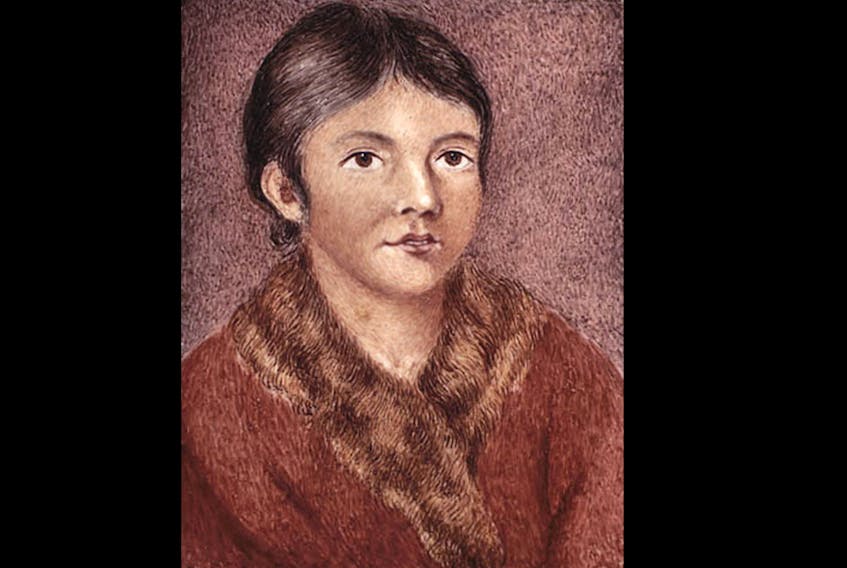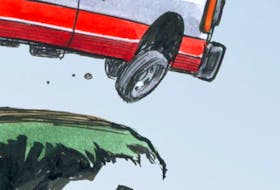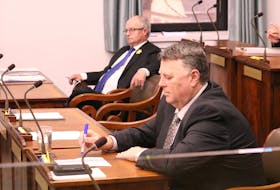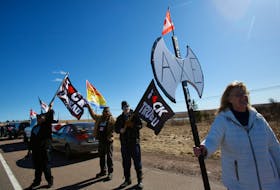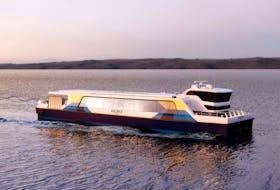
Let’s hope it is merely unfortunate coincidence that in the same week the provincial government announces a $13-million advertising campaign to promote tourism, the National Museum of Scotland declares its intention to return to Canada the bones of two Beothuk.
Perhaps The Rooms, planning ahead for when its exhibited giant squid finally rots into jelly, will prepare a place to display the Beothuk bones.
We can only guess, because the announcement by the province gave no details. Where will the bones go? What will be done with them? The released statement by Premier Dwight Ball did not address these obvious questions.
The statement calls the repatriation “tremendously significant.” The last of the three paragraphs is sickeningly pious: “Through tremendous partnership and perseverance, we can restore these remains to their rightful home, reflect on what has been lost, and be hopeful about what can be gained through reconciliation, and by honouring Indigenous culture.”
Which amounts to only so much blather because it doesn’t include an answer to the first and biggest question on anybody’s mind: will the bones be put in a museum?
Pity the Beothuk — dead almost 200 years, but still the subjects of condescending political spin rather than the truth.
As reported by The Telegram on Tuesday (“Finally coming home: Scotland to return remains of Beothuks”), the federal government requested the return of the bones, and they will be shipped to the Canadian Museum of History in Ottawa.
Get ready for the coming controversy. The initial argument, understandably enough, will be about whether the bones should reside in Ottawa or Newfoundland.
That debate will entirely miss the point. This being 2019, surely we are long past the time when anyone deemed it proper to display Indigenous people’s bones in a museum.
No, the bones do not belong in The Rooms. They belong at the site from which they were taken in 1828 — a burial chamber near Red Indian Lake in the province’s interior.
Brendan Mitchell, chief of the Qalipu Mi’kmaq First Nation Band, told The Western Star on Monday that one of the conditions set by the National Museum of Scotland for the return of the bones was that they “be held in a controlled environment.”
That is, a museum. That the federal government would agree to this condition, and that the provincial government would applaud it, is astounding and outrageous. The Scots should have been told that Canada intends to show respect toward the two people whose bones they are, and rebury them in their rightful and original place.
This being 2019, surely we are long past the time when anyone deemed it proper to display Indigenous people’s bones in a museum.
Otherwise, no thanks — we won’t be party to your continued contempt toward Indigenous people.
(Speaking of which, this is what D.W. Prowse said about the Beothuk in his 1895 treatise, “A History of Newfoundland”: “Whatever may be said about the Beothics (sic), there can be no doubt they were a most bloodthirsty, treacherous race.”)
Some will argue, predictably, that the bones are valuable for scientific study. Fine. Take some samples to extract DNA, and so on, and then put them back from where they were stolen.
The controversy will be complicated by the fact that these bones are not anonymous — they belonged to Demasduit and Nonosbawsut, whose tragic story is well documented.
In the winter of 1819, John Peyton Sr. and John Peyton Jr. led an armed party to Red Indian Lake to retrieve items stolen by Beothuks. When the settlers arrived at their campsite, the Beothuk fled. Demasduit was captured. Her husband, Nonosbawsut, tried to rescue her, and was fatally shot and bayoneted. Demasduit was taken to St. John’s, where she was called Mary March (the date of her capture was March 5, 1819). She died in 1820, and her remains were taken back to Red Indian Lake and left for the Beothuk, who put her body in the burial chamber with Nonosbawsut.
So, here we are in 2019. Come see our Beothuk bones.
Brian Jones is a desk editor at The Telegram. He can be reached at [email protected].
RELATED

